I hope everyone is staying healthy during this weird time. I find myself thinking about what it must have been like in 1918 with the Spanish flu. Then as now, there were folks who realized social distancing was necessary. My grandparents, all four of them, apparently did so since they all survived, but they were a tough lot. My father’s parents came over from Russia to New York, escaping more malicious, human-caused dangers of pogroms. My mother’s parents were a little more removed from the old country and were well settled in the Midwest but still had enough connection Germany that my two grandmothers were able to communicate using German and Yiddish (or at least that is the story). In any case, they managed to survive and thrive – probably too busy with the former to obsess much about the latter. I am lucky enough to have time to fret but also room to get outside, breathe fresh air, and enjoy the springtime.
This month our local study group has been weaving an appropriately old-fashioned structure: overshot. It is a good therapy for a quarantine in springtime – it takes enough concentration to be consuming and it can glitter enough to make it distracting. You will recognize it possibly as coverlet weaving. Normally woven on four shafts in fine linen/cotton for a ground cloth, the pattern threads are usually a fine wool. The resulting fabric is light weight, durable, and really quite warm. I decided to depart from tradition somewhat and focused on small scarves with tencel and bamboo.
I started with a miniature overshot pattern from Bertha Gray Hayes (Number 92 “Afterthought” from “Weaving Designs by Bertha Gray Hayes – Miniature Overshot Patterns” by Norma Smayda, Gretchen White, Jody Brown, and Katharine Schelleng). My first scarf used a tencel warp with a tencel and bamboo weft. Traditionally, the ground cloth is woven to be stable even without the pattern threads present and is about 1/2 the weight of the pattern threads. I used my little table loom so I could weave outside and enjoy the sunshine and fine spring days. The ground weft is managed in one shuttle and the pattern weft in another, a somewhat laborious process especially with a small table loom.
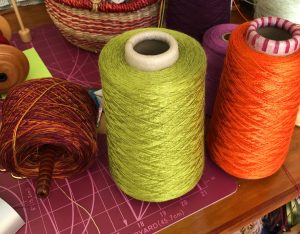
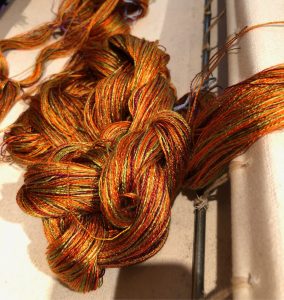 A faster way to weave overshot is to turn the pattern so that the pattern and ground threads are the warp and you only need to weave with one shuttle to finish the ground cloth. My next two scarves made use of that technique and they fairly flew off the loom. The downside? Once you decide on the pattern warp, you are fairly committed. These are all just experiments but the result of all three tries were usable scarves with a great hand. And who would think these colors would work so well together? The warp on the right gives a hint of the end result.
A faster way to weave overshot is to turn the pattern so that the pattern and ground threads are the warp and you only need to weave with one shuttle to finish the ground cloth. My next two scarves made use of that technique and they fairly flew off the loom. The downside? Once you decide on the pattern warp, you are fairly committed. These are all just experiments but the result of all three tries were usable scarves with a great hand. And who would think these colors would work so well together? The warp on the right gives a hint of the end result.
The activity of weaving has a soothing aspect. It is rhythmic. It appeals visually. We engage our sense of touch. There is also symmetry if we want it – potential order out of visual chaos. I find all of this extremely positive as we try to manage our way through what can feel like an indefinite time of isolation. And it is springtime! In the winter, I force color because I miss the light. In the spring, I wallow in color as the leaves and flowers erupt in gorgeous profusion. With the sun, our gardens, and a mental challenge to keep me oriented, the strange task of staying home seems more manageable. I do not take for granted how lucky I am to have this opportunity to do so comfortably.
Next time: spinning successes and failures
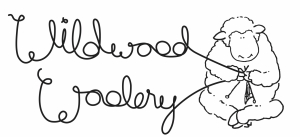

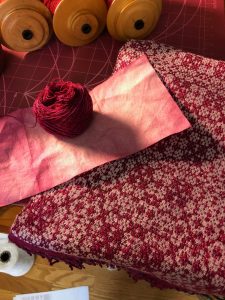
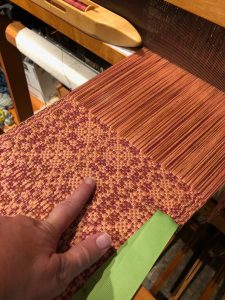

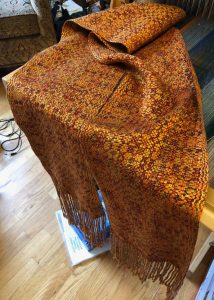
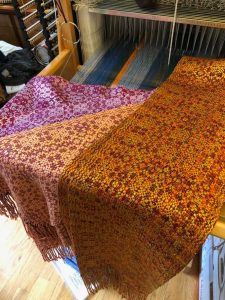
So pretty! And the clematis is gorgeous too.
<3
Very pretty! I love the shimmer.
,
<3
Works of art!
<3
These are really great, Lisa. I’m eager to see them in person to better see how those colors play.
In person will be nice indeed!
I’m not sure turned overshot has been faster in my experience but maybe that’s because I haven’t done any large scale projects. I’ll have to give it another whirl!
It is WAY faster – talk about a scarf a day – just whizzes by until you lose your place (hahaha)